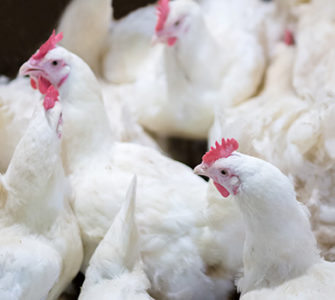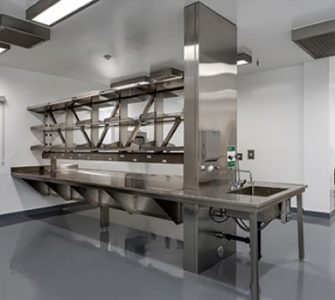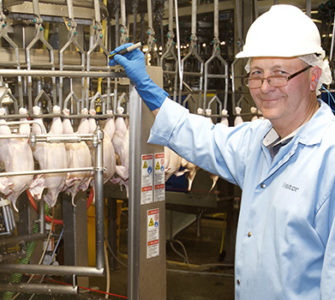USDA evaluating Salmonella-reduction steps along the poultry supply chain
More than 1 million cases of US foodborne illnesses are caused by Salmonella each year, and even though the poultry sector has made great strides in reducing the occurrence of the pathogen, almost 25% of those illnesses are linked to poultry products. In response, USDA has made reducing Salmonella infection a top priority and is reconsidering its approach within the poultry sector and the actions needed going forward.
“[Poultry] product contamination has been reduced pretty significantly over the course of 20-plus years, but there’s no meaningful reduction in [foodborne] illnesses,” Sandra Eskin, USDA’s deputy undersecretary for food safety, told Poultry Health Today. “Of course, it’s not just meat and poultry that contribute to Salmonella infections; it’s other…products as well.”
Notably, USDA has regulatory jurisdiction at slaughter and processing plants related to meat and poultry but does not have direct authority on the farm. To get an accurate measure of product contamination, USDA is looking at everything along the poultry supply chain, including interventions on the farm.
“It is our responsibility to make sure that companies, producers and processors are doing everything they can to limit contamination,” Eskin said. “Our focus is the condition of the bird when it enters the slaughterhouse. So, everything that comes before that is relevant.”
Start at the farm
Part of USDA’s plan to address Salmonella contamination is to work with poultry producers and companies and encourage them to submit pilot proposals to limit the pathogen on the farm.
“Much – if not most – of the contamination enters the slaughterhouse in and on the birds,” Eskin noted, so on-farm strategies play a role in lowering that contamination.
“Then, in-plant interventions could reduce it to a point where we are confident the product is safe to eat,” she added.
USDA is talking with poultry companies and trade associations, collecting feedback and exploring ways to incentivize participation in the pilot program. Eskin cited other specific reasons why on-farm participation is key to the effort:
- USDA wants to collect as much useful production data as possible to support future regulatory and policy decisions related to poultry and Salmonella. “We sample and test product in the plant, but that’s really just a snapshot in time,” she said. “Production companies do much more frequent testing, and that’s the main piece we’re hoping to get.”
- As many companies, processors and producers have effectively reduced Salmonella levels, sharing their data can help others do the same. Combining that real-world data with academic studies and other resources will provide “science-based, data-driven policy, which everyone agrees we want,” Eskin added.
She acknowledged that production companies are often skeptical about sharing data with a regulatory agency for fear it could be used for enforcement. “We can address those concerns, mostly through compiling and anonymizing data,” Eskin said. “I cannot underestimate the value that real-time, real-operation data plays in developing a policy.”
Identifying the right interventions
Interventions to reduce or minimize Salmonella-contamination levels on the farm, such as vaccines, probiotics, clean feed and biosecurity, have already had an impact. For example, vaccines have been shown to lower the amount of Salmonella entering a processing plant. But some vaccine antigens can lead to false positives, as there’s no way to differentiate between naturally occurring Salmonella and the vaccine.
“It’s clearly an issue that’s on our radar screen,” Eskin said. USDA is working with vaccine companies and other parties to identify future options.
“In many instances, vaccines are a very effective intervention, [but] they are not a silver bullet,” she added. “It is not a one size fits all. We know the combinations of interventions will vary from operation to operation…and that will go a very long way in reducing contamination that makes people sick.”
USDA wants to incorporate incentives for poultry producers to apply such interventions. Also under consideration is establishing standards where farms get “credit” if Salmonella falls within specified levels.
2023 is the target
As part of the Salmonella-reduction effort, USDA is doing risk-modeling to evaluate interventions, incentives and final program options. This process will take a year or more to complete.
Eskin hopes that by the end of 2022, USDA will be ready to open a written comment period and hold a public meeting on the proposal, then present a framework for stakeholders to consider. “We want to have a conversation – we still want input,” to make sure the proposal is headed in the right direction, she added.
“The timeframe is beyond our control,” Eskin said. “But hopefully by 2023, we’ll roll things out piece by piece as part of an integrated strategy.”
Posted on September 8, 2022

















